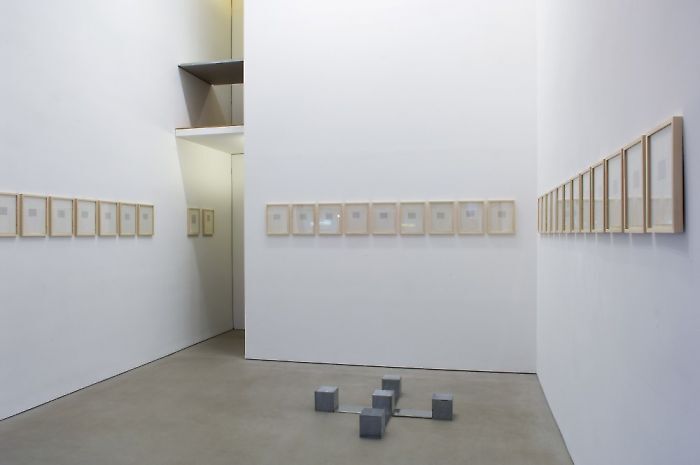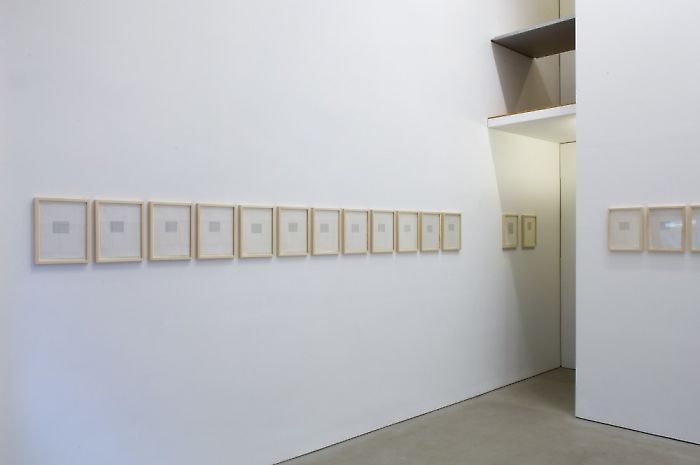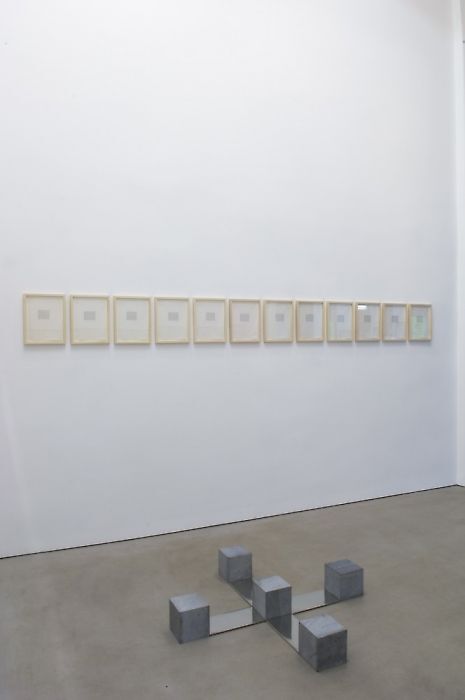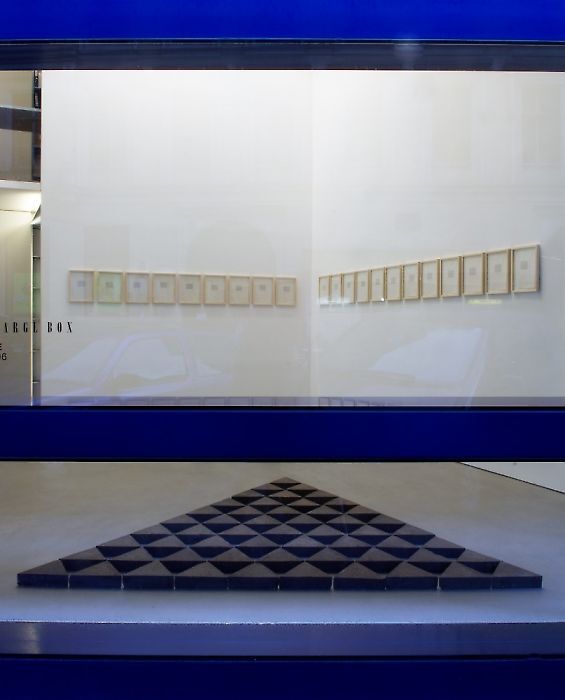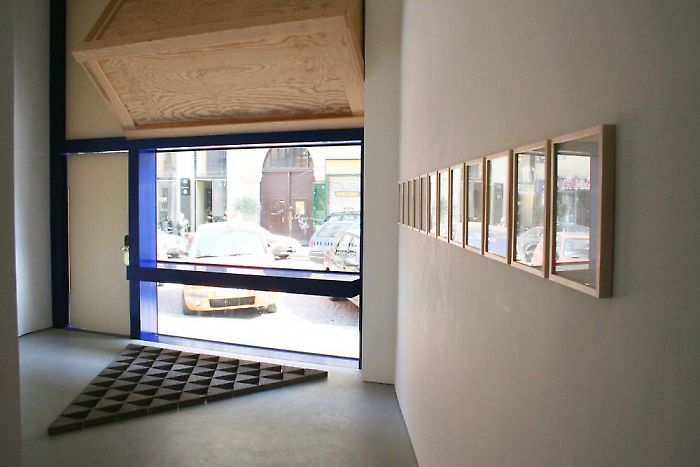—
Carl Andre
On Carl Andres Poems
Carl Andre provided a new perspective on sculpture when he placed work flat on the floor; his touch as a poet was no less radical. Andre designed the shape of poetry according to his own understanding of the word as a concrete module, similar to the squares of industrial metal, wooden timbers, or bricks in his signature three-dimensional pieces. His poems don't always incorporate complete sentences, phrases, or even associative terms, but use words sequentially. Shaped text functions as both pattern and poem - visual art and literature simultaneously. On the occasion of his first gallery show at Tibor de Nagy, Andre said he wanted to "seize and hold the space", and the same is true in his command of the clean, white, 8 1/2 x 11 inch sheet of paper, a standardized, manufactured material. Here the words are methodically punched out on a manual typewriter, or hand-written with a felt-tip pen; mostly dense, black text on a white background, sometimes the reverse, and occasionally red.
A rigorous, formal structure is applied to each of Andre's poems, and he has written over 1.000 pages since the late 1950's. The placement of the letters which form the words, and then how the words sit on the page have provided him with great diversity in shape and pattern. Often the arrangement of the words creates a defined field, a text-landscape, carefully placed on the page.
In many of Andre's poems, he abandons the spaces between words that tell us where one stops and another starts. The words seem hidden within greater fields of letters. His playful manipulation provides a way into poetry through the particular beauty of words in meaning, naming and presence. Andre said "I am trying to recover a part of the poet's work which has been lost. Our first poets were the namers, not the rhymers. The great natural poem about anything is its name."
Just as Andre stripped the notion of constructing a sculpture down to the brick, his process essentializes poetry down to the simplest elements. Words (common objects) according to Andre, "have palpable tactile qualities that we feel when we speak them, when we write them, or when we hear them, and that is the real subject of my poetry". In the early work, words form sentences, but more often in the later poems, contour takes the place of syntax. The pictorial strength in the work comes from Andre's great ability to compose. The link between his sculpture and poetry is easy to make in this regard. Words are laid end to end, or stacked in vertical columns. The overall design of the page is evident long before you try to read it for sense.
Andre's graphic arrangements incorporate lists, grids, fields, maps, stacks and other patterns to order information. At the same time, classical literary forms such as sonnets, songs, odes, lamentations, operas, dithyrambs, even novels, inform the poem's final shape . In One Hundred Sonnets (I ... flower), 1963, the repetition of single words command the page by forming a sequence of fields directly related to the "places" created in Andre's metal floor work. Each page is composed of only one word repeatedly typed, lower-case. There are a total of 99 separate words, resulting in 99 poems on that many sheets of paper, plus a title page. A small field is centered on each page, and created by stacking 14 identical lines, one atop the next. Pronouns, body parts and fluids, elements, colors, and numbers, the terms accumulate associatively. The series is composed of blocks of the most ordinary words, some neutral or calm, others borrowed from a bathroom wall. One Hundred Sonnets is a vast and emotionally complex view of humanity as described by isolated fragments.
Hollis Frampton, Carl Andre's childhood friend, (who, along with Sol Lewitt is acknowledged in a number of the poems), commented briefly on the artist's writing in a 1969 catalogue essay : "That words have spatial and plastic qualities along with their sonorous and associative properties, was a discovery that exfoliated systematically in the space of pages divided by the typewriter into a uniform grid".
Text: Rob Weiner
Inquiry
Please leave your message below.

